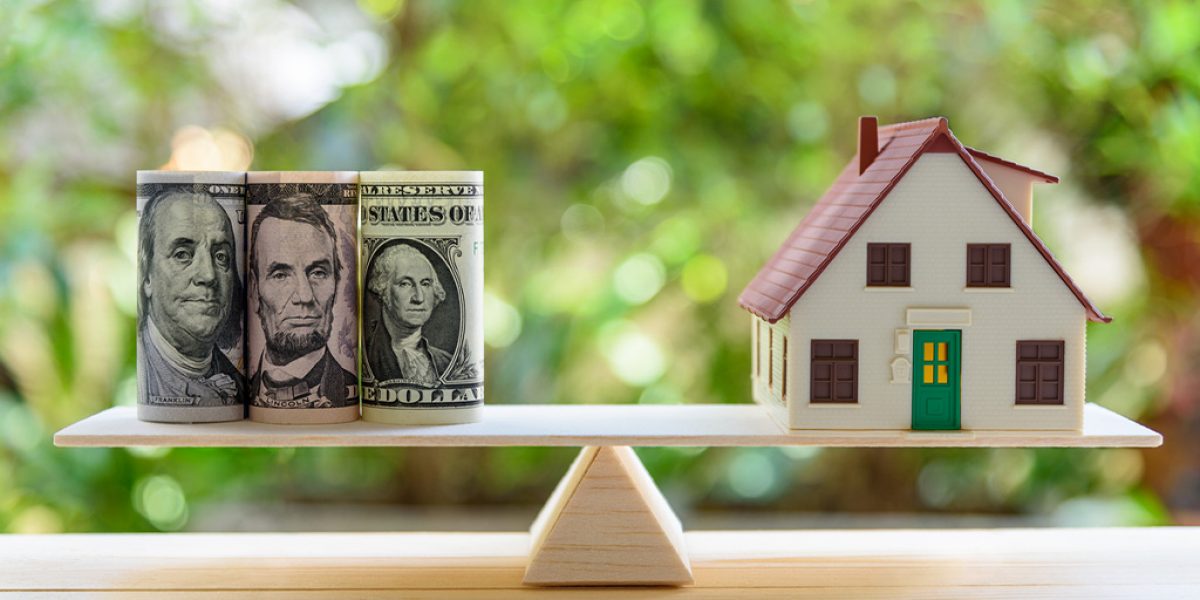You hear more and more about reverse mortgages post-COVID, as some people would like to stay in their homes longer rather than move into a retirement community. You have probably seen TV commercials with celebrity spokespeople. A reverse mortgage loan may sound appealing for those with a large amount of their wealth tied up in their primary residences. But are reverse mortgages too good to be true? We find that reverse mortgages are a useful financial planning tool for a select few, but must be scrutinized and fully understood before moving forward.
Reverse Mortgage Basics
If you own a primary residence and the youngest owner of the home is at least 62 years old, you may be able to borrow against your home equity to get cash or a line of credit from a reverse mortgage lender. You get cash disbursements from the lender and there are no monthly loan payments to make. The loan is repaid when you or your heirs sell the home.
The most popular type of reverse mortgage is the Home Equity Conversion Mortgage (HECM) which is backed by the federal government. These loans, much like a regular mortgage, can be fixed-rate the entire life of the loan or an adjustable rate that fluctuates over time. The Home Equity Conversion Mortgage is regulated by the Federal Housing Administration (FHA) and the U.S. Department of Housing and Urban Development (HUD).
The amount a homeowner can borrow varies based on the age of the youngest borrower, the home’s value, current interest rates, and the HECM mortgage limit, which crossed the million-dollar threshold in 2023 has moved higher again in 2024 and now stands at new maximum in 2024 is $1,149,825.
Understand the Costs and Fees
Reverse mortgage expenses add up quickly, they are not for everyone. These expenses can be rolled into the loan. The closing costs typically include:
- Origination fees – capped at $6,000.
- Appraisal and inspection fees.
- Mortgage Insurance – for a Home Equity Conversion Mortgage (HECM), this is 2% of the total loan value. So, if you want to have a reverse mortgage for $500,000, it will cost you $10,000 out of the gate.
Your ongoing fees are interest on the loan and a yearly mortgage premium of 0.5% of the outstanding balance if you have at least 60% equity in the property. If you borrow over the 60% equity threshold, that yearly mortgage premium can jump to 2.5%. These ongoing costs compound, which means you will pay interest and fees on top of last month’s interest in fees that were added to the loan balance.
You must be current on all property taxes, homeowners’ insurance, and homeowners’ association fees. You must also maintain the property while using a reverse mortgage.
When do you pay back your reverse mortgage?
Unlike a conventional mortgage, there are no due dates or payments to make as long as you live in the home. You can pay down the balance of the reverse mortgage if you choose, but most of the time, the balance is paid off in a lump sum single payment. Here are some scenarios where the reverse mortgage would be paid off:
- You sell the property – No longer able to live at home or choose not to. The loan balance is paid off with the home sale proceeds.
- You live outside the home for 12 months – You must live in the home as your primary residence to qualify for a reverse mortgage. If you live outside the home for more than 12 consecutive months, for example, if you moved to an assisted living, the lender can call the loan due.
- You pass away – Your heirs become responsible for paying back the loan either by selling the home or taking out a loan to keep the property. The HECM is a federally backed loan; they won’t own more than the balance due.
The Pros of a Reverse Mortgage
- A reverse mortgage can pay off an existing mortgage, freeing up cash flow to be spent.
- No payments necessary until after you move out of the house or pass away.
- Reverse mortgage proceeds are not treated as income by the IRS. You are able to tap cash without paying ordinary income tax rates like IRA or 401k.
The Cons of a Reverse Mortgage
- A reverse mortgage is an expensive tool to access the equity in your home. Origination fees, the 2% upfront premium insurance, the interest on the loan, and the yearly mortgage insurance premium that runs another 0.5% to 2.5%.
- The interest rate on most reverse mortgage loans is variable, meaning they can increase over time raising borrowing costs.
- The interest on a reverse mortgage is not taxable deductible like a regular mortgage.
- If you fail to comply with the terms of a reverse mortgage, it can result in foreclosure.
Contact the Bedell Frazier Financial Planning Team if you have any questions about a reverse mortgage. We can model using the equity in your home to help fund your retirement goals in our financial planning software. We can also help you decide if a reverse mortgage is a good fit for where you are in life.


